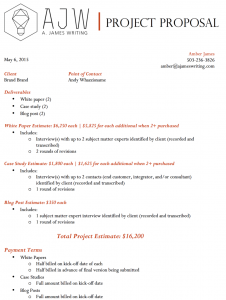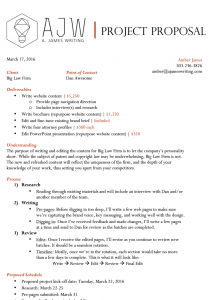Welcome to the latest blog post from CC: PDX, your Portland copywriting experts. Terri Wangle, CC:PDX member and owner of Spotlight Ink, recently discussed social media, brand awareness, and practical business strategies with Cara Chace, a go-to professional in the digital marketing and social media strategy realm.
Terri Wangle: How do businesses pick the right social media platform?
Cara Chace: “First, business owners need to have a very clear picture of their audience and to research where their audience is online. Start by searching for ‘social media demographics.’ Besides Google, just ask people.”
TW: List must-do first steps when launching your social media account?
CC: “Decide how you and your employees will share online as a brand, and make a decision tree for who and how you answer clients’ questions. Consistently engage on platforms where you find your clients and interact with them, answer questions, and share valuable information. Remember timeliness is the rule of social media.”
TW: Explain the 80-20 rule.
CC: “Nobody wants to see your sales. If all you’re posting is a 20-percent-off promo, they won’t care. Make sure you’re sharing valuable, interesting, or entertaining information 80 percent of the time. You’re earning the right to share that 20 percent of sales pitches. Remember, the same people are engaging on different platforms for different reasons, like Facebook is a brain break and LinkedIn is for networking and expanding professional expertise. It also helps to expand your definition of ‘valuable.’ It could be that you make someone laugh—but the content always needs to align with your brand voice and your company’s two or three predetermined subject areas.”
TW: The fear of encountering an upset customer sometimes keeps business owners from using social media. How do you recommend businesses plan and proceed?
CC: “It goes back to the foundation and knowing how you talk and engage online, like the type of words we use or don’t use. You want to make sure your team is on the same page and that you’ve empowered your people to answer clients. Another way of looking at this scenario: Instead of freaking out, like deciding someone is just a jerk, remember that people who are upset will often become your biggest advocates when you (the business owner) make it right.
My biggest recommendation: take it off-line as soon as possible. For example, a restaurant responds quickly and publicly to an unhappy customer, showing others that they care and are paying attention. The restaurant provides directions and immediate connection the decision-maker who can make it right. Make sure everyone on your team knows the key person and how the plan works. Don’t just list ‘customer_care@restaurant.com’ or an 800 number. Also, never call attention to the ‘negative’ review by asking that person to change it. Hopefully, you’ll have gone above and beyond, and they will probably change the review themselves. Final thought, the absolute worst thing you can do is to ignore somebody. So, check your social media at least once a day.”
TW: How would you recommend dealing with an abusive commenter?
CC: “Depending on what platforms you’re using, you have different tools and approaches. Like if you’re on a Facebook group, you should have very specific rules for what is allowed and not allowed. I’ve adopted an idea that I heard from another expert: ‘I’m not here to give you a warning.’ There’s different ways to polish that message to match your brand voice, but if they are a jerk, they’re gone. At this point, customer service is protecting your ‘tribe,’ the people who are there because they want to consume your content. Some specifics: if someone is just being ridiculous and cursing, just delete the comment. There’s nothing wrong with that … there’s no obligation if someone is coming at you and your tribe with that kind of attitude. They are responsible for being a decent human being. And, if they continue to come back, block them.”
TW: What is the most helpful rule of thumb for using social media as a business or nonprofit?
CC: “Consistency! It’s the only thing that will ever get your business to the tipping point of brand awareness that social media is designed for. Your business needs to build that know-like-and-trust factor with people. It has opened up our world, and it lets people have a relationship with your brand. They are giving you their time and attention. Don’t take it for granted. It is invaluable. Also, don’t think of social media in terms of likes: ‘I only got two likes on my post.’ It’s more quality instead of quantity. So, challenge yourself and give the best—Remember? Valuable, interesting, or entertaining—and people will see that value and follow your brand. Another practical note about the importance of consistency: algorithms! Most platforms are based on algorithms. Facebook. Instagram. And they won’t show your stuff when you’re not consistently present. Start small and get your flow and system … don’t go crazy and burn out and drop off. The same goes for your website. If someone goes to your website and you’ve not updated it (especially your blog), it shows that you’re not serious. If you’re not consistent, people automatically wonder if you’re still in business. Be consistent!”
Need more help with your social media? Check out Cara’s “Top 5 Ways to Make Your Social Media Kick Ass in 2017.” Need help crafting content? Contact one of the Portland Copywriters..


